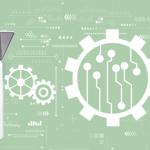A global sustainability study found that 50% of the surveyed consumers consider sustainability one of the top five brand differentiators. 34% of the consumers are also willing to pay more for products by sustainability-conscious companies. The study claims that sustainability today is a clear customer expectation, and no longer an exception businesses are willing to make.
Growing environmental consciousness and such consumer demands are urging more and more brands to be more intentional about sustainable business practices. As per a new report, one-fifth of 2,000 of the world’s largest companies now have a net-zero commitment. Together, these companies, representing nearly $14 trillion in sales, have interim targets and a robust plan and reporting mechanism to support their commitment.
With systematic efforts towards continuously measuring your organisational carbon footprint, you too can take timely steps to minimise your business ecosystem’s environmental impact. But without the right tools, technologies, and best practices, measuring your carbon footprint can be challenging. So, where do we start?
Identifying and capturing carbon emission data: the challenges
Making your business more ecologically responsible starts with calculating greenhouse emissions throughout the value chain. Doing this is time and labour intensive and can be challenging because
- Understanding how your business can contribute to local and global sustainability missions and how individual actions affect the planet can be difficult.
- There is no standard methodology to calculate carbon emissions.
- Understanding the different scopes of emissions, categorising between them, and calculating their combined effect can be complex.

For details on this infographic, please click here.
- In most cases, reliable and actionable data is completely missing. Many companies are only now beginning to record their carbon emission data. And for others, older records of carbon footprint are either inaccessible or not in usable formats.
- Even if you have data on your direct and indirect carbon emissions from energy consumption, this is often dispersed over several spreadsheets. The tools needed to track, analyse, and use this data effectively are often missing.
To overcome these challenges and become carbon-accountable, you need to arm your business with a net-zero roadmap, carbon accounting guidelines, and human and digital resources to capture and analyse data adequately.
Take tangible steps towards carbon accounting and achieve net neutrality
Here’s how you can start:
Build a net-zero strategy using international guidelines
Businesses that are truly committed to becoming net-zero, continuously and frequently take stock of their emissions, so they can act as needed in time. Net-zero initiative leaders have fine-tuned their practices and put together guidelines for other companies.
If you are just starting out, access international, government, and industry-specific guides that can help build suitable best practices within your organisation.
Ensure compliance with government and corporate regulations
To ensure standardised calculation of carbon emissions, the World Economic Forum has established an ESG framework that requires companies to report their greenhouse gas emissions in a set format. Integrating these frameworks into your data collection platform can help you remain compliant with reporting standards.
Instil sustainability values in your talent and partners
Instilling a sense of personal accountability by making the data visible to everyone could help reduce scope three emissions.
Set up net-zero initiatives that require employee involvement. This initiative can draw attention to everyone’s responsibility for solving the climate crisis. Creating company-wide policies to use sustainable packaging material or adopting green cooling options like vertical plant walls can help reduce the business’ carbon emissions.
On the other hand, partners can be asked to up their carbon accountability by helping them set up similar practices. Partners willing to join the net-zero mission can be given incentives based on their progress.
Use a dedicated solution to make your net-zero initiative failproof
Use a solution that can unify data from multiple sources on one platform. Collect data from all stakeholders by conducting surveys and demanding bills for different purchases and services, like electricity, fuel, travel, etc., to identify their energy consumption levels and feed it into the centralised system. Use a solution to automate some of these processes, like recording data from digitally uploaded bills, employee time stamps, etc., to consolidate all data on one platform and reduce the manual work involved in logging these values.
This can help you keep track of your emissions across the three scopes, particularly the third – the hardest to calculate.
Salesforce Net Zero Cloud can help streamline your sustainability journey
Build a climate action plan around a 360-degree single source of truth with speed and accuracy. Salesforce Net Zero Cloud is a comprehensive solution that can make tracking, analysing, and reporting your business’s carbon emissions easy and reliable.
It comes with powerful analytics capabilities that generate data-driven insights. Access sophisticated data visualisations and dashboards to deeply understand the environmental impact of your business and use these to build data-backed sustainability solutions. Net Zero Cloud can make analysing all of this data easier by providing pre-uploaded datasets, guides, and user flows to make better sense of your business’s carbon footprint.
Since it is built on the trusted Salesforce Platform, it can seamlessly integrate with other Salesforce tools to unify data from all departments, partners, and suppliers.




























